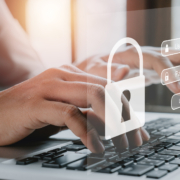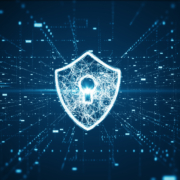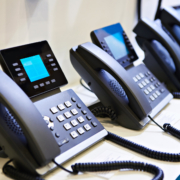Working From Home – Is Your Network Secure?
[et_pb_section][et_pb_row][et_pb_column type=”4_4″][et_pb_text]
Introduction
It’s essential to properly secure a home network if remote work is to be successful. By employing the right security measures, companies can protect their data and ensure the privacy of their employees. This is why working from home requires network security and proper administration; without it, companies risk compromising their data and the safety of their employees.
Types of Home Network Security
Working from home is becoming more and more popular, as technology advances and more employers take advantage of remote work possibilities. With this comes the need to ensure proper network security and administration, to protect the data being transferred back and forth. The three main types of home network security are:
- Firewall security
- Encryption
- Password protection
Firewall security blocks unauthorized access to your home network, while encryption scrambles data sent between computers and devices, making it unreadable to anyone who isn’t given the key. Password protection is an additional layer of security that requires a unique, complex password to access the network. By properly implementing these security measures, employers can rest assured that their data is safe and secure when employees are working from home.
Home Network Security Threats and Vulnerabilities
Home networks face various challenges and vulnerabilities, which may compromise the security and performance of the connected devices. Some of the common challenges and vulnerabilities include:
- Weak passwords: Using weak passwords for Wi-Fi networks or device logins can make the network vulnerable to unauthorized access and hacking attempts.
- Outdated firmware: Failing to regularly update device firmware may lead to the exploitation of known vulnerabilities, potentially allowing unauthorized access and control over your devices.
- Insecure devices: Using IoT devices or smart home appliances without proper security protocols can pose a risk to your network. Hackers may gain control over these devices, giving them access to your personal data and potentially your entire network.
- Lack of encryption: Encrypted communications make it harder for unauthorized parties to intercept and tamper with your data. Failing to use encrypted connections like HTTPS or enabling WPA3 encryption for Wi-Fi may expose your information to third parties.
- Phishing and social engineering: Cybercriminals often use deceptive tactics like phishing emails and social engineering to infiltrate your home network by tricking you into sharing sensitive information or clicking on malicious links.
- Malware: Malware includes viruses, ransomware, and other malicious software that can infect your devices through various means, such as email attachments, malicious website downloads, or infected software.
- Eavesdropping and man-in-the-middle attacks: Hackers may intercept your data by positioning themselves between you and the target server, compromising sensitive information like usernames and passwords.
- Denial of Service (DoS) attacks: In a DoS attack, an attacker floods a network with excessive traffic or requests, causing the targeted system or network to become overwhelmed and unresponsive.
To minimize the risk of these vulnerabilities, it’s essential to regularly update your devices and software, use strong passwords, employ security measures like encryption, and remain vigilant against phishing or other online threats.
Network Security Administration
A home network requires security and proper administration to ensure data is safe and secure. Network security is a key component of network administration and involves setting access privileges, network monitoring, and regular software updates. Setting access privileges requires creating user accounts with the appropriate access privileges for each user, so that only authorized personnel can access the network. Network monitoring involves monitoring the network for any suspicious activity that could be a security threat. Regular software updates are also necessary to ensure that the latest security patches and upgrades are installed, so that the network is secure. With the right security measures in place, home networks can be secured and kept safe from any malicious activity.
Conclusion
When it comes to working from home, network security is essential for protecting sensitive information and data. Home network security is a critical component of keeping your home network safe and secure. It is important to have a secure network that is not vulnerable to malicious actors. With proper home network security, you can be sure that your data is protected from hackers, viruses, and other cyber threats. Additionally, proper administration of your home network is key to ensuring that security measures are implemented effectively. Network security administration requires ensuring that all access points to your network are properly secured, that all users are granted the proper access privileges, and that all security protocols are regularly updated. By taking the necessary steps to properly secure your home network, you can be sure that your data remains safe and secure, even when working from home.
[/et_pb_text][/et_pb_column][/et_pb_row][/et_pb_section]













